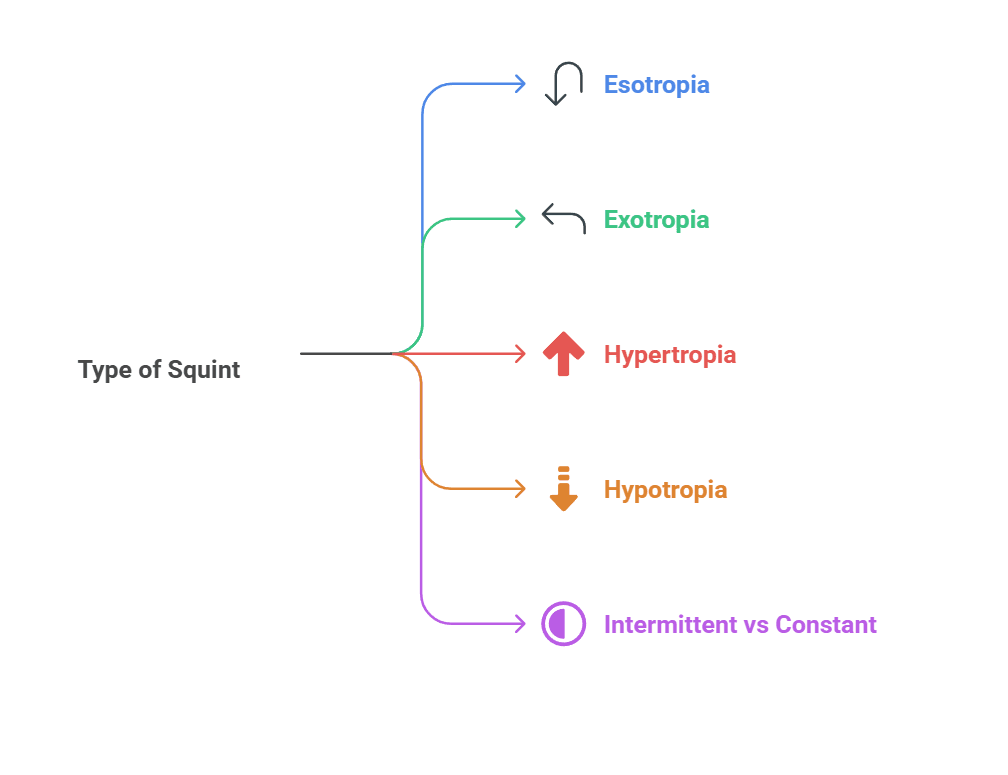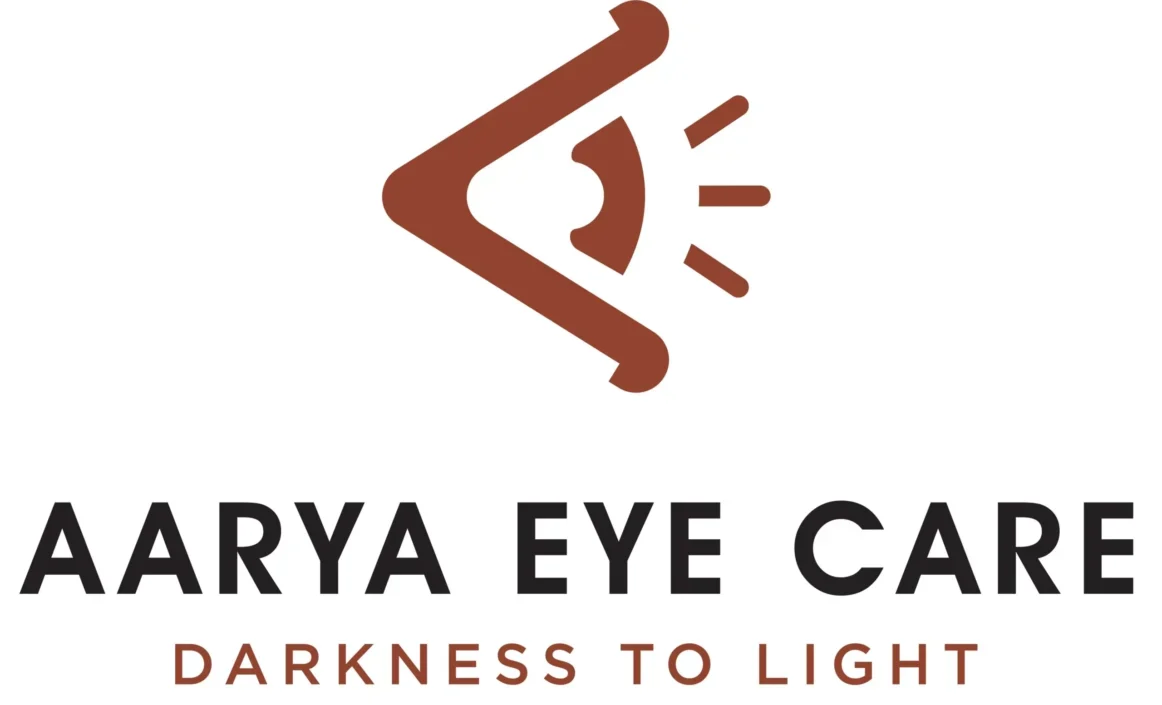Squint: Everything You Should Know About Causes, Symptoms, and Treatment
Squint, medically known as strabismus, is a condition where the eyes do not align properly, causing one or both eyes to turn in different directions. Squinting can occur at any age and may develop due to underlying medical conditions, neurological factors, or eye muscle imbalances. With early diagnosis and the right treatment, patients can achieve improved eye coordination and better visual clarity. In this blog, we will examine causes of squint, common symptoms and treatments.
What is Squint?
Squint develops due to weakness of extra ocular muscles or due to nerve damage. The improper alignment between the eyes produces periods of time when it can be either constant or intermittent, therefore affecting vision and depth perception. Both children and adults experience effects of squint, which may produce long-term vision difficulties when not treated properly.
Types of Squint

Different types of squint are classified based on the direction of eye deviation.
- Esotropia – The affected eye turns inward, commonly seen in children.
- Exotropia – One or both eyes turn outward, which may worsen when the person is tired or focusing on distant objects.
- Hypertropia – One eye shifts upward while the other remains straight.
- Hypotropia – The affected eye moves downward.
- Intermittent vs. Constant Squint – Some individuals experience occasional eye misalignment, while others have a persistent squint requiring medical intervention.
Causes of Squint
Squint can develop due to various factors, ranging from congenital conditions to acquired medical issues. Understanding these squint causes helps in choosing the right squint treatment approach.
- Congenital Factors: Some babies are born with a genetic predisposition to squint due to inherited muscle imbalances. Birth defects affecting eye muscle coordination can lead to early-onset squint.
- Refractive Errors: Hyperopia, or farsightedness, forces the eyes to work harder, sometimes causing misalignment. Myopia, or nearsightedness, and astigmatism can also contribute to squint development by affecting focus and clarity.
- Neurological or Muscle Disorders: Conditions like cerebral palsy, Down syndrome, and stroke can affect the nerves controlling eye movement. Any disruption in the brain’s ability to coordinate eye function can lead to a squint.
- Eye Injury or Previous Surgery: Trauma to the eye or head injuries can interfere with normal eye movement. Certain eye surgeries may result in temporary or permanent misalignment.
- Poor Vision in One Eye: When one eye has significantly reduced vision, the brain may begin to ignore input from it, leading to misalignment over time.
Symptoms of Squint
People who have experienced squint symptoms that change based on both the severity level and origin of their condition. Early diagnosis of squint helps protect patients from lazy eye development as well as permanent vision loss.
- Misaligned eyes
- Double vision
- Difficulty in focusing
- Eyestrain and headaches
- Head tilting and squinting
- Reduced depth perception
- Lazy eye
Diagnosis of Squint
An ophthalmologist helps you to conduct a comprehensive eye examination to assess the misaligned eyes, the severity of the squint and identify the best treatment plan. The diagnostic process includes:
- Visual Acuity Test – Measures The Ability To See Details At Various Distances.
- Slit Lamp Examination – A Microscope test to check the front and inside of the eye for abnormalities.
- Cover Test – Determines The Extent And Nature Of Misalignment By Covering One Eye At A Time.
- Cover – Uncover Test – Detects latent phoria by observing eye movement when one eye is uncovered.
- Alternate Cover Test – Identify manifest or latent strabismus by rapidly alternating occlusion between Both Eyes.
- Prism Bar Test – Measure the angle of strabismus by gradually increasing prism strength until eye alignment is neutralized.
- Ocular Motility Test – Evaluates how well the eyes move together in different directions.
- Refraction Test – Identifies any underlying refractive errors that may contribute to squint.
- Neurological Examination – Assesses nerve function if the squint is linked to brain-related conditions.
- Fundus Examination – To rule out causes for sensory squint.
Treatment Options for Squint
The choice of squint treatment depends on the severity of the condition and the underlying cause. Both non-surgical and surgical options are available.
Non-Surgical Treatments
- Prescription Glasses or Contact Lenses –Squint associated with refractive errors shall be corrected with respective glasses.
- Eye Patching (Occlusion Therapy) – Covers the stronger eye to stimulate the weaker eye and prevent lazy eye (amblyopia).
- Vision Therapy & Eye Exercises – Helps strengthen eye muscles and improve coordination.
- Botox Injections – Temporarily weakens overactive eye muscles to restore alignment.
Surgical Treatments
- Squint Surgery – Adjusts the position of the eye muscles to correct misalignment.
- Orthoptic Therapy – Helps patients regain binocular vision after surgery through specialized exercises.
Why Choose Aarya Eye Care for Squint Eye Treatment in Thrissur?
Aarya Eye Care is a leading eye care center in Thrissur, known for providing comprehensive squint treatment with advanced technology and expert ophthalmologists. Here is why patients trust and choose us:
- Experienced squint surgeons offering personalized treatment.
- Highly advanced diagnostic technology and equipment for precise evaluation.
- Personalized treatment plans suitable for both children and adults.
- Affordable and accessible care with a focus on long-term results.
- Detailed post-treatment care and follow-up to ensure successful recovery.
Conclusion
The diagnosis of Squint occurs before treatment so patients gain optimal outcomes. People experiencing eye misalignment, double vision, or squint symptoms must contact experienced squint surgeons based in Thrissur for a consulting appointment. Timely treatment enables vision restoration to achieve better patient quality of life through clear, comfortable, coordinated vision. At Aarya eye care, we have the best squint surgeons in Thrissur who specialize in squint detection and treatment.
Schedule a booking at Aarya Eye Care and experience the most effective treatment methods for squint.








